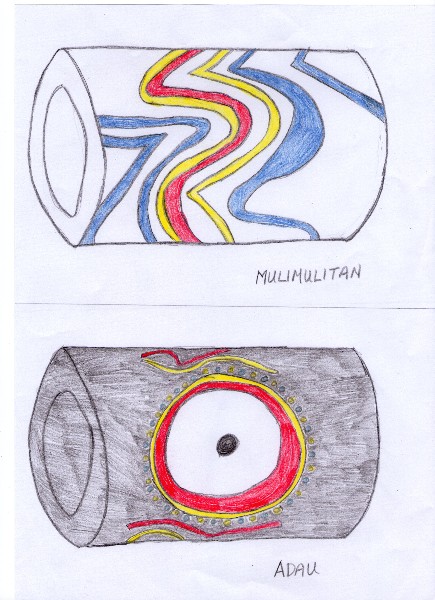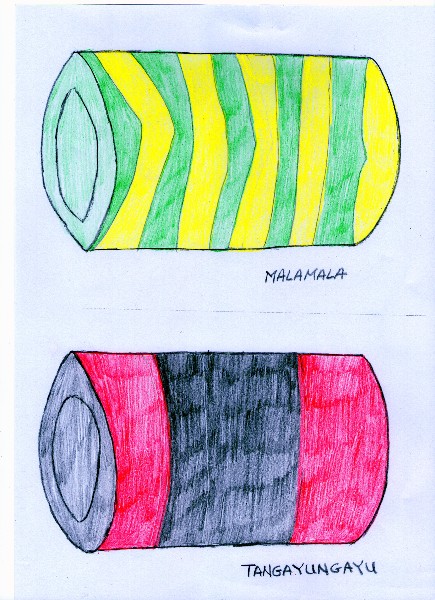Legends of the beads of the Paiwan tribe: Part 2
This is the second part of an eight-part article introducing the traditional names, meanings and legends associated with 34 glass beads of the Paiwan tribe.
MULIMULITAN
The traditional dwellings of the Paiwan tribe were made of slate. Along the sides, pieces of slate were stacked to create walls. Where the pieces of slate did not perfectly fit together there were small openings. Smoke from cooking over an open hearth escaped through these openings and wafted upward toward the heavens in wave-like patterns similar to those seen on these beads. In addition, sunlight poured down from the heavens through the windows in a rainbow of colors representing the link between the heavens and the earth. Mulimulitan beads were considered the most valuable of the traditional Paiwan beads and could only be possessed by the chieftains. To marry someone of the chieftain social class, this bead was an essential betrothal gift. There are different types of Mulimulitan, those with red, yellow and blue wavy lines are considered the most valuable.
ADAUAdau is also called the bead of the sun and is associated with contracts and announcements. According to tribal legend, there was a great chieftain who lived in an isolated area. He found it difficult to convey messages, which made him very distressed. One day, an immortal noticed the great chieftain’s situation. He asked the sun to move high into the sky to shine its light everywhere. The immortal helped the great chieftain to complete a contract with the sun to assist in sending messages to his people. This bead features a radiating sun pattern on black background.

MALAMALA
Malamala is also referred to as the bead of insect pupae and is associated with divination. Children of the Paiwan tribe were told to look for a green pupa on the underside of a betel nut tree leaf. If they sincerely asked for the answer to a question, they could find out the answer by observing how the pupa moved. This was mostly considered a form of entertainment rather than serious divination, and thus this bead is associated with play and merriment.
TANGAYUNGAYU
This is the bead of discipline and ethics. It is also called the black bee bead. There is an aggressive species of black bee that inhabits a certain type of bamboo. If its nest is disturbed, the bees will launch an immediate attack, viciously stinging the invaders. The elders note that in the same way one should be careful not to violate rules and ethics to avoid punishment or misfortune. Thus, this bead has become associated with respect for laws and ethics.

Source: Much of the information contained in this article is from research conducted by and provided courtesy of Umass Zingrur.
Note: There are variations in bead shapes, colors and patterns. These illustrations are a reference only and may not provide a completely accurate depiction.